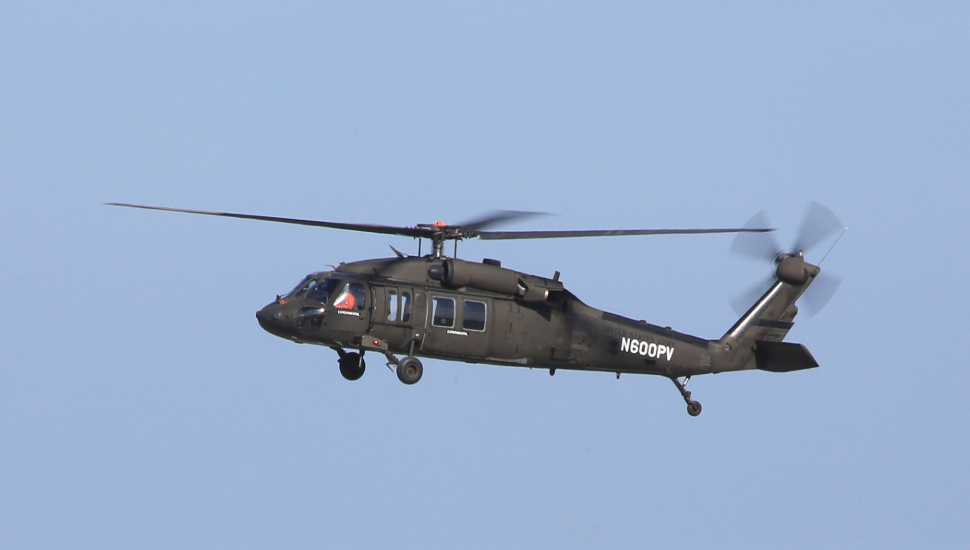A Sikorsky UH-60A that was retrofitted with fly-by-wire controls and an autonomous flight control kit made its first manned flight on 29 May in West Palm Beach, Florida.
Sikorsky is conducting follow-on flight testing throughout the summer of 2019 to expand the optionally piloted helicopter’s flight envelope. It plans to conduct a fully autonomous flight without any pilots in 2020.

Optionally Piloted Sikorsky UH-60A takes first flight
Sikorsky
“The notion [is] a vehicle that can fly with two crew, one crew or no crew, depending on mission demands,” says Chris Van Buiten, vice-president of Sikorsky Innovations. Such a system could fly the helicopter autonomously, allowing air crews to focus on mission planning or aiding injured passengers. It could take over if pilots were killed by enemy fire.
Sikorsky is moving rapidly to expand the helicopter’s operating envelope. On the first flight the UH-60A hovered and flew at 40kt (74km/h). In about a week since, the helicopter has flown four times, flying up to 80kt on its most recent flight.
The helicopter is the first to be retrofitted with a full authority fly-by-wire Optionally Piloted Vehicle (OPV) kit developed by Sikorsky. To install the fly-by-wire system, the company completely removed mechanical flight controls from the UH-60A, the oldest model of the Black Hawk.
The OPV kit is based on Sikorsky’s Matrix autonomy technology, which the company has been demonstrating on a modified S-76B, called the Sikorsky Autonomy Research Aircraft (SARA). That aircraft, which has been in testing since 2013, has more than 300h of autonomous flight. Sikorsky plans to pass along capability developed on SARA to its OPV kit.
That autonomy technology was developed with hundreds of millions of dollars in joint investment from Sikorsky, the Pentagon’s Defense Advanced Research Projects Agency and the US Army, says Van Buiten.
The company says its OPV kit could be retrofitted to almost any UH-60 in the US Army inventory, as well as the medium-sized civilian S-76 or S-92 helicopters. Van Buiten declines to say the kit’s cost or how long it would take to retrofit onto a helicopter, but suggests it could be part of a larger upgrade package for the US Army’s UH-60 fleet.
“It’s possible this goes in at the same time as other capability,” he says. “For example, the army is looking at the [Improved Turbine Engine Program] for the Black Hawk.”
The company sees the OPV kit as improving handling qualities and adding autonomy, but also ensuring safety on helicopters. It cites controlled flight into terrain as the number one cause of helicopter crashes and says that such a system could take over from a distracted pilot, pulling the aircraft away from a collision course.
Sikorsky is working with DARPA and the US Federal Aviation Administration to certificate its OPV technology so that it could be available on current and future commercial and military aircraft.
Ultimately, the company believes the ability to update its OPV technology with new software features could enable a long string of improvements to its helicopters.
“This architecture enables decades of enhancement of capability,” says Van Buiten. “There is no end. It will constantly be spiraling and adding functionality.”
Source: FlightGlobal.com


























